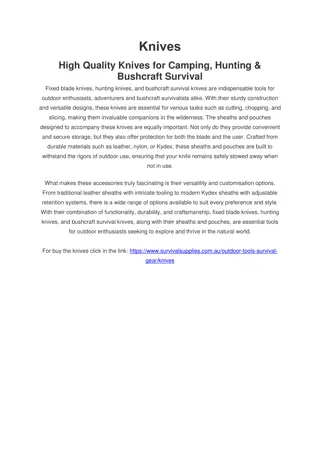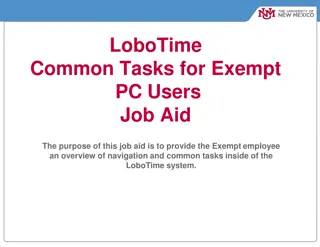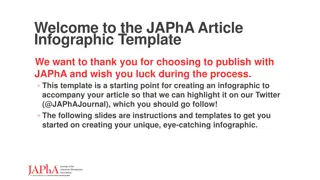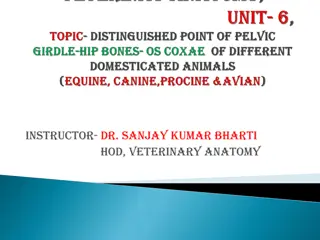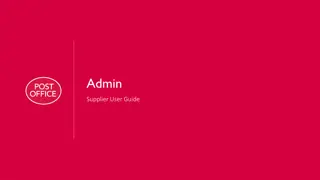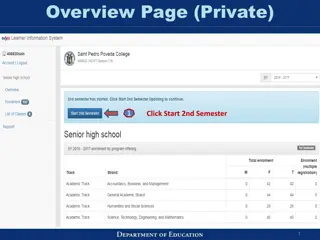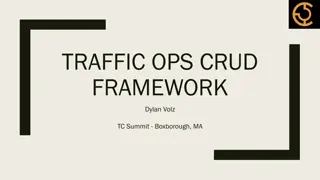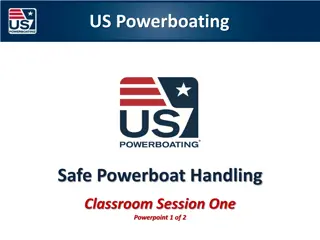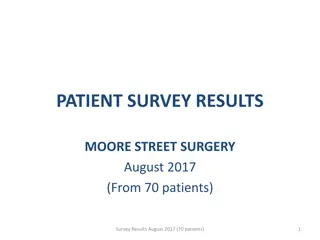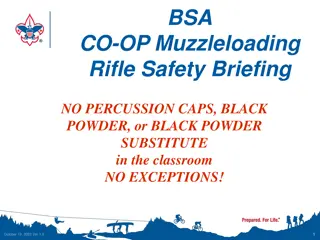
Unveiling the Ethical Landscape of News Reporting
Explore the importance of presenting accurate, unbiased news articles to inform readers worldwide. Delve into the significance of journalist credibility and the evolving forms of news dissemination in the digital era.
Download Presentation

Please find below an Image/Link to download the presentation.
The content on the website is provided AS IS for your information and personal use only. It may not be sold, licensed, or shared on other websites without obtaining consent from the author. If you encounter any issues during the download, it is possible that the publisher has removed the file from their server.
You are allowed to download the files provided on this website for personal or commercial use, subject to the condition that they are used lawfully. All files are the property of their respective owners.
The content on the website is provided AS IS for your information and personal use only. It may not be sold, licensed, or shared on other websites without obtaining consent from the author.
E N D
Presentation Transcript
PURPOSE Inform readers of important facts and events Present true and fair accounts of issues and happenings News articles should be as fact based and objective as possible However, its important to remember, each news provider has its own policies, agenda, and built-in biases
Audience Readers who want to be informed about world events and issues and to be kept up-to-date Some readers will scan the first few paragraphs to get the main idea, so they need to include the most important material up front Some readers who are especially interested- personally or professionally-in a given topic, however, will read for depth Some readers will even read the entire article and also turn to related articles
Journalists use ethos and logos to reach their audiences. A news publisher's reputation for "getting the story right" is crucial, as are the reputations of reporters associated with the publisher. If a reporter's credibility is seriously tarnished, his or her career in journalism will quickly end. In 2003, for example, promising New York Times reporter Jayson Blair was fired for plagiarizing parts of several news reports he had written. The Times called it "a low point in the 152-year history of the newspaper" and apologized profusely to its readers. In 2016, the Guardian dismissed reporter Joseph Mayton for fabricating stories.
News articles can take many forms. With the rise of digital news sites such as The Huffington Post, many print newspapers have moved online. Most traditional print newspapers have companion Web sites; for example, you can read many of the same stories in both the print and online versions of The New York Times, the Wall Street Journal, The Washington Post, and the Los Angeles Times, although some online content requires a subscription. The advantages of the online news article are that it can be updated instantly, can link to related articles and sources, and can be accompanied by video. Online publications also allow readers to post comments, making these sources much more interactive than print newspapers. In addition to appearing in print and in digital formats, news stories can take the form of audio and video reports. National Public Radio covers all the top stories that print and digital news outlets cover, but in audio form. Many digital news outlets, such as MSNBC, also make videos of news coverage available online.
The credibility (or ethos) of the reporter, publisher, and content is crucial. Writers must be scrupulous in their research and fact-checking. A rule of thumb in journalism is to verify a report with at least three reliable sources. When an error is discovered in an article, jour- nalists and publishers are usually quick to make a correction and apologize.
Most newspapers, news magazines, and news sites have a very broad readership with varying degrees of education, so the level of vocabulary in a news article must be appropriate for all. Most are written with a ninth- or tenth-grade vocabulary. The New York Times, however, is written at a twelfth-grade level of vocabulary and comprehension.
A Lede or Lead is a conside summary or opening paragraph that begins a news article The Lede states the most important aspects of their story and grabs the reader's attention. In the rest of the article, reporters elaborate on what was presented in the opening paragraph. Because many readers skim rather than read a full article, the content of the lead paragraph is especially important.
Journalists know that readers might not read the whole article so they present information in order of importance. Paragraphs closer to the beginning of the story provide details that are more important in understanding the essence of the story; those closer to the end, however, provide information that is less essential, given that some readers may not read the whole article to the end.
Quotations provide evidence and information directly from the source and give ethos or credibility to a story Journalists often quote sources directly to add flavor to their articles and to maintain the feel of "just the facts, ma'am."
Short Paragraphs are easier to read (especially in column format). News articles are laid out in columns and thus paragraphs cannot be too long.
A neutral tone and absence of personal opinion. Goal report information. Serious, formal tone. But not dry boring tone. Should not include opinions/ p.o.v. An objective, third-person voice. *Precise language to clearly communicate facts and details. *Third person (he/she/they) rather than the first person (l/we). Just enough detail for the general reader. Only important details. Not the level of details an expert on the topic would expect.
An attention-grabbing title or headline. The title of a news article is called a headline. It is usually presented in much larger or bolder type than the story itself and is brief and descriptive. Headlines are used to attract readers and are sometimes provocative. A byline. A byline is the presentation of the author's name, usually below the headline and above the text of the article. A serif typeface. Print usually uses serif fonts and digital usually uses sans serif fonts.
Images: photos, charts, graphs, and multimedia components provide context, grab readers attention and enrich the content of articles. In online articles, journalists often add video, audio, and other multimedia links as well. Headers, footers, and tabs. Online news sites use tabs, navigational menus and search boxes to help readers find what they need on a page.
News reports are based on eyewitness accounts, authoritative published documents, interviews, and records. Most journalists indicate their sources within their news articles, using attribution phrases such as "according to" and linking directly to their sources.
Editorials and other opinion pieces are texts that convey a writer's views on a particular topic, sometimes a controversial topic. This type of writing can be called by different names, such as opinions, perspectives, commentaries, and viewpoints, and can take the form of a letter to the editor or an online comment in response to an issue or other piece of writing. Editorials and opinion pieces appear in newspapers and magazines, on TV and radio, and in blogs and other online publications. Editorials also include editorial cartoons. An editorial represents the opinion of a news agency's editorial board, and therefore represents the opinion of the publisher. An opinion piece, on the other hand, could take the form of opinion columns by regular featured writers, and letters from readers in which they share their views.
Individual writers. An average citizen or student who writes an opinion piece or letter to the editor does so to convey his or her view on a specific issue, with the intent of persuading other readers. For example, in one issue of the Oregon Daily Emerald, a University of Oregon student wrote a column titled "Students Should Have Wider Gun Liberties" in response to an article discussing how the university campus prepares for a campus shooting. The student's purpose is clear-as is his opinion. The same is true for an individual columnist, staff or syndicated writer for a specific newspaper, magazine, or other news organization; that is, the columnist conveys his or her own opinion in the editorial and not the opinion of a publisher, though there is some gray area here because the writers are usually employed by the publisher.
Editorial board writers. Texts that are written by the editorial board of a newspaper or magazine convey the opinion of the publisher. These editorials are intended to educate and persuade readers to agree with a specific idea and/or to take a specific action. The editorial boards of most newspapers reflect a conservative or liberal point of view through their editorials; for example, the editorial board of The New York Times has a reputation for being fairly liberal, while the editorial board of the News-Gazette of Champaign-Urbana, Illinois, has a reputation for being conservative.
Anyone with access to newspapers, magazines, television, radio, or the Internet can read or watch editorials and opinion pieces. You might scan the opinion pages of newspapers regularly, or mainly during an election or controversy, in order to read the opinions, analysis, and interpretations of others on various issues.
Editorial and opinion piece writers rely most on ethos and logos to persuade readers of the validity of their positions. Writers are careful to avoid exaggeration and oversimplification to come across as credible (ethos), and they use evidence to appeal to readers' sense of logic (logos).
Newspaper editorials and opinion pieces are usually presented as written texts; sometimes they're accompanied by a small photo of the writer to establish the writer's credibility. Some editorials include charts or other infographics. Some editorials are presented as audio texts or as digital or print written texts.
The distinction between an editorial or opinion piece and a news article is important: Editorials or opinion pieces are opinions based on research and analysis, whereas news articles are objective reporting based on research. That is, editorials reflect a personal view, while news articles are supposed to be totally free of opinion. Editorials or opinion pieces are usually clearly labeled as editorials (or opinion, viewpoint, or commentary).
An editorial or opinion piece is typically about five or so paragraphs long, which means the author needs to make his or her point quickly.
Editorial and opinion piece writers make their strongest cases when they anticipate objections and opposition to their views.
Often after explaining a problem, writers will examine potential solutions and suggest one over another.
Editorials and opinion pieces often close with a short and thought-provoking statement.
Many online editorials become discussion starters in which hundreds or even thousands of readers post replies to the original editorial and to other posts.
Concise Detail. Writers use specific facts throughout their editorials to support their position. Because they are making a case, they need to use enough evidence to convince readers, but they still need to keep the entire piece fairly brief. Use sound reasoning and avoid logical fallacies. Opinion writers support their claims with quotations from experts. They also strive to avoid errors in reasoning known as logical fallacies.
Use analogies and refer to cultural and historical events. Writers use comparisons to clarify the issue and refer to other events to help readers identify with it. Use interesting language. Opinion writers avoid jargon and instead use language that will appeal to readers who may not be familiar with the issue. They may also use rhetorical questions to spark readers' attention. Convey a clear, personable voice and tone. Writers use clear, persuasive language as they present their opinions and support them with facts. Editorial writers often write in the first person (I) and in a friendly and inviting tone to reach a wide readership.
Write clear, interesting headlines. Whether they're published in print or online, editorials, like news articles, are presented with a headline designed to get readers' attention and to make it clear what the editorialist is writing about. Editorials and opinion pieces are also clearly labeled as such, or with other terms, such as opinions or commentaries, that denote subjective writing.
Opinion writers refer to specific examples. They back up their generalizations by offering a variety of support from credible sources. They present evidence with attribution phrases that let readers know where the data came from.






